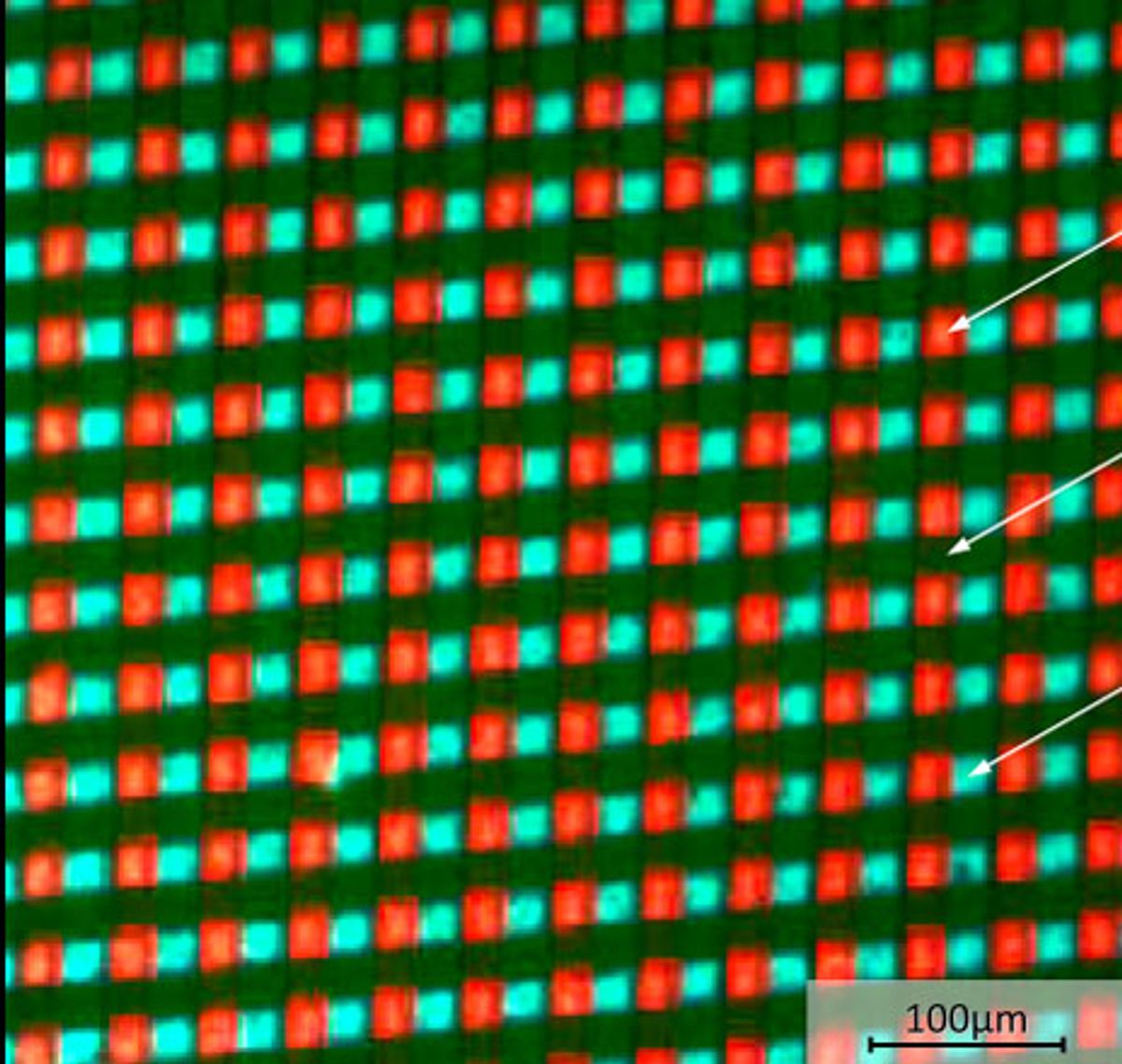9 December 2009—The next big thing in solid-state lighting may be exceedingly tiny—the quantum dot. Researchers from around the world gathered at the Materials Research Society fall meeting in Boston last week to discuss the progress they're making in using quantum dots to enhance the color and efficiency of light-emitting diodes (LEDs).
Quantum dots are nanometer-size bits of semiconductor material, such as cadmium selenide, that fluoresce when excited by photons or electrons. By choosing a certain material and a certain size, researchers can precisely tune the wavelength of light emitted. In general, a dot that's 2 nanometers in diameter emits blue light, a 4-nm dot emits green, and a 6-nm dot emits red.
Seth Coe-Sullivan, chief technology officer of QD Vision, a Watertown, Mass., start-up working on quantum dots for use in lighting and displays, says the advantage of quantum dots lies in the ability to pick a desired color without losing efficiency. Today's white-light LEDs consist of a blue-emitting LED coated with a phosphor that is excited by the LED and emits a yellow or orange light. The combination of blue and yellow produces a cold white light lacking in red photons, so human skin, among other things, looks unnatural under it. There are phosphors that can produce color closer to that of an incandescent light, but they come with a 30 percent drop-off in energy efficiency.
By contrast, Coe-Sullivan says, QD Vision has produced an optic coated with a thin film of quantum dots and fits over a blue LED lamp. With the optic, the lamp produces light with a color temperature of 2700 kelvins—about the same as that of an incandescent bulb. It has a color-rendering index (a measure of how "natural" colors appear under it) of 90, compared with 95 for an incandescent bulb and less than 75 for most white LEDs. It also produces 65 lumens per watt, a vast improvement over the 15 lm/W of incandescent bulbs and on par with compact fluorescent bulbs. QD Vision has started shipping that optic to two lighting manufacturers; the lamps should be on store shelves by January.
"The main benefit of the quantum dot is you're able to get a really efficient lightbulb with a high-quality color rendering index," says Vladimir Bulovic, a professor of electrical engineering and leader of the Organic and Nanostructured Electronics Laboratory at MIT. He says the QD Vision optic represents the first practical optoelectronic device based on this technology. Coe-Sullivan did his Ph.D. work in Bulovic's lab, and Bulovic is a founder of QD Vision.
Bulovic and other researchers are working on creating quantum-dot LEDs that are electrically pumped, thus eliminating the need for a gallium-nitride LED as a photon source. But the electroluminescent LEDs produced so far in laboratories are still in their early stages. To make such devices, researchers closely pack the quantum dots in an organic thin film that acts as a transport layer for electrons. But doing so reduces the luminescent efficiency of the dots from more than 90 percent to about 15 percent.
The first practical use of electrically pumped quantum-dot LEDs will likely be in displays, such as computer monitors, where Bulovic says they'll provide more saturated color than organic LEDs do but still retain that technology's ease of manufacturing and flexibility. Electrically pumped quantum-dot solid-state lighting will take longer, because reaching the brightness required for general illumination requires driving the LEDs at higher currents, which reduces their lifetime. But Bulovic is sure that researchers will eventually reach that goal. One way of extending the lifetime would be to replace some of the organic materials in the LEDs with metal oxides or chalcogenides, which won't degrade with exposure to air and moisture.
Color Clash
Stripes of quantum dots are electrically pumped to emit light.
Bulovic isn't worried about improving the efficiency. It's just a matter of spending the time to learn more about the chemistry, the size and shape distribution, and other technical details about quantum dots. "There is nothing impossible about making extremely long-lived, very bright, very stable quantum-dot LEDs in the long run," he says. "It's just going to take a few years to get there."
About the Author
Neil Savage writes about science and technology from Lowell, Mass. In November 2009, he reported advances in developing high-density stackable phase-change memory.

